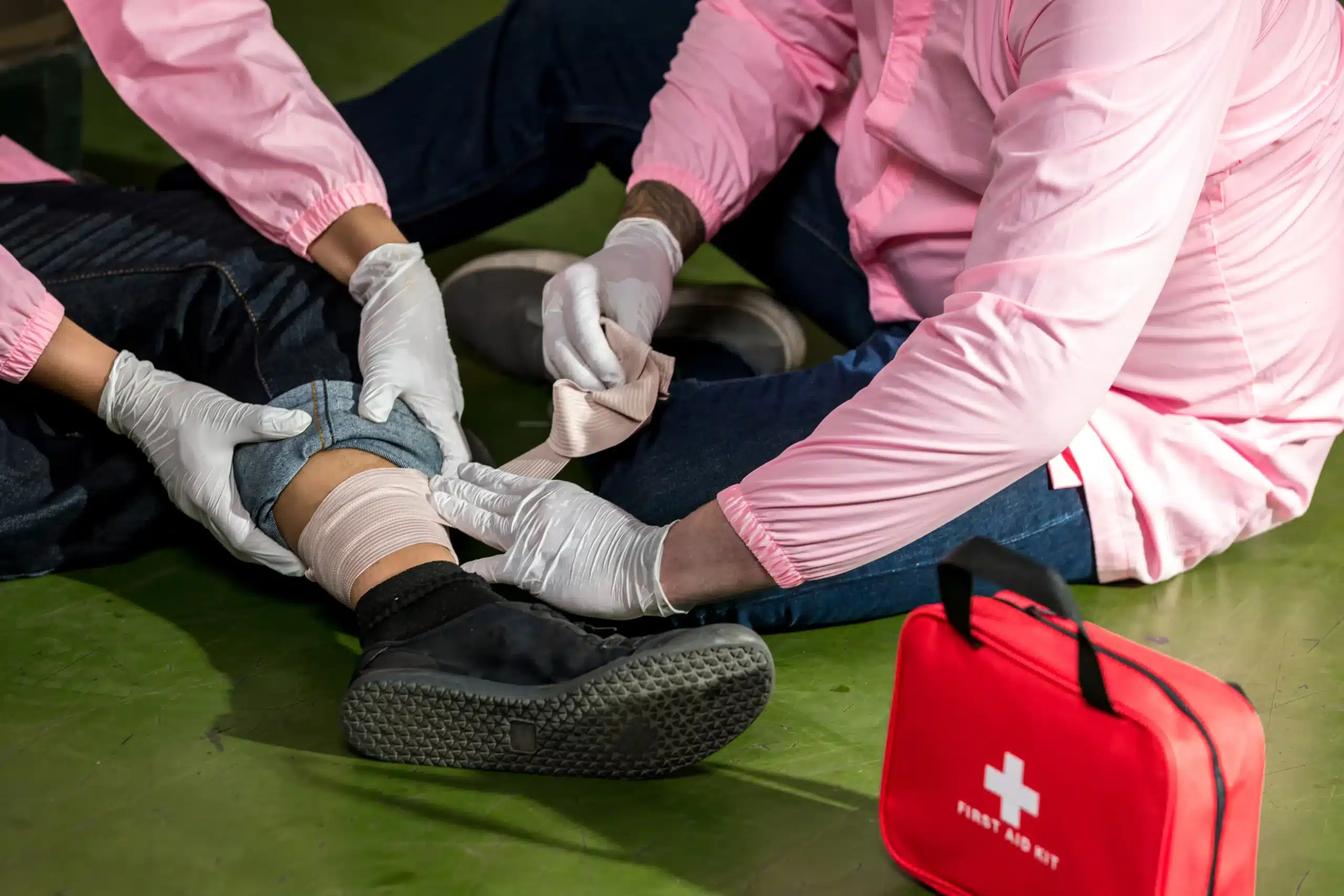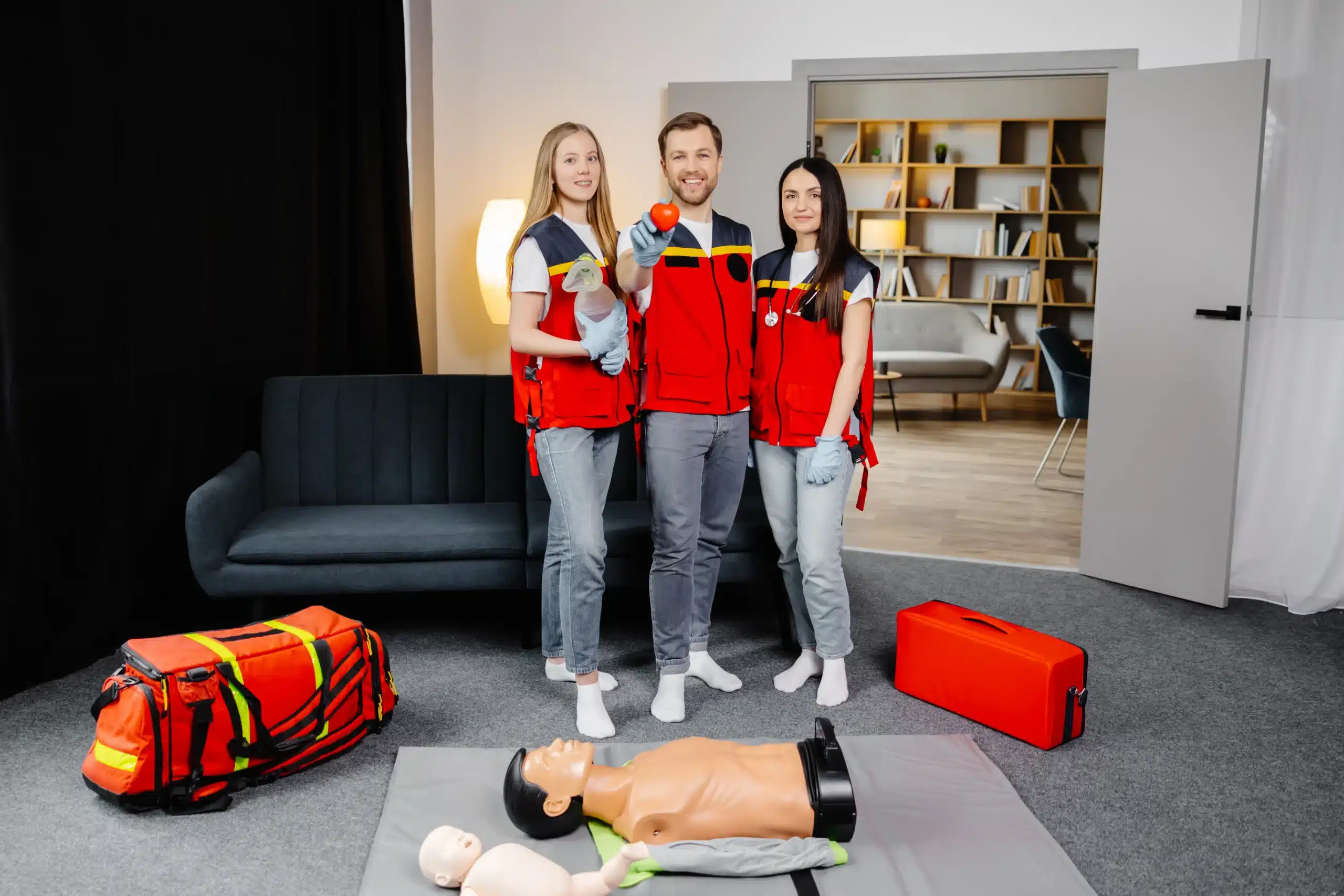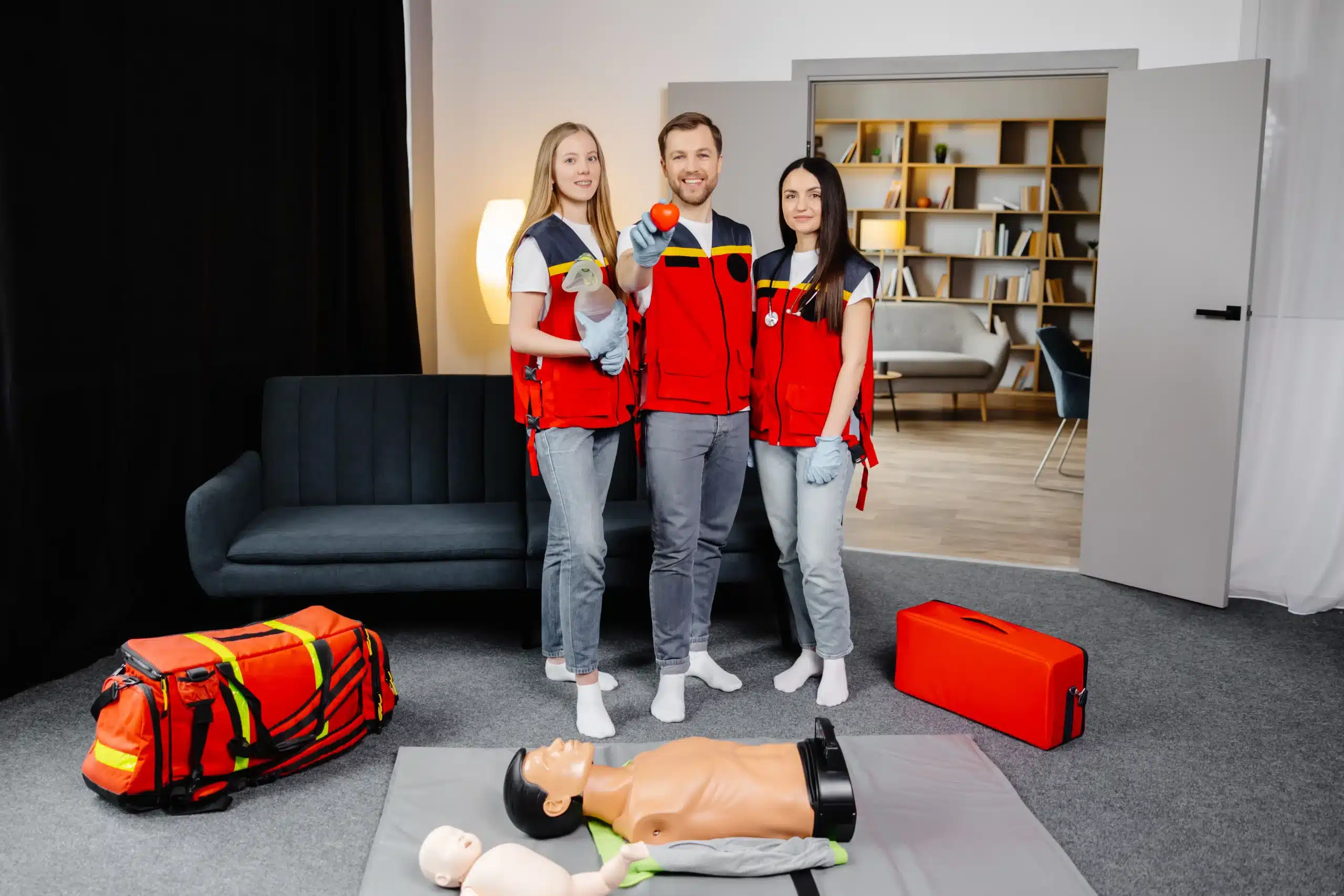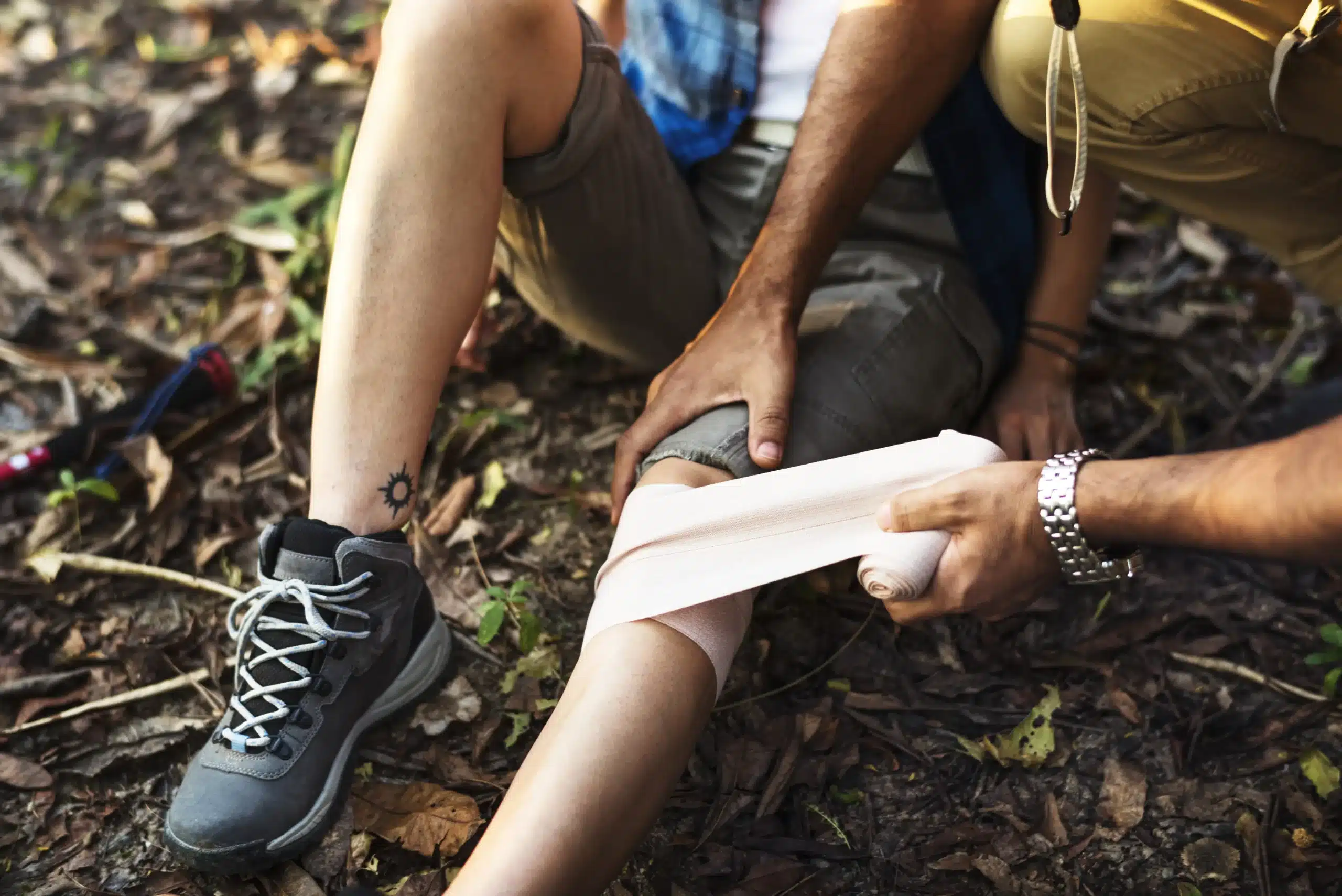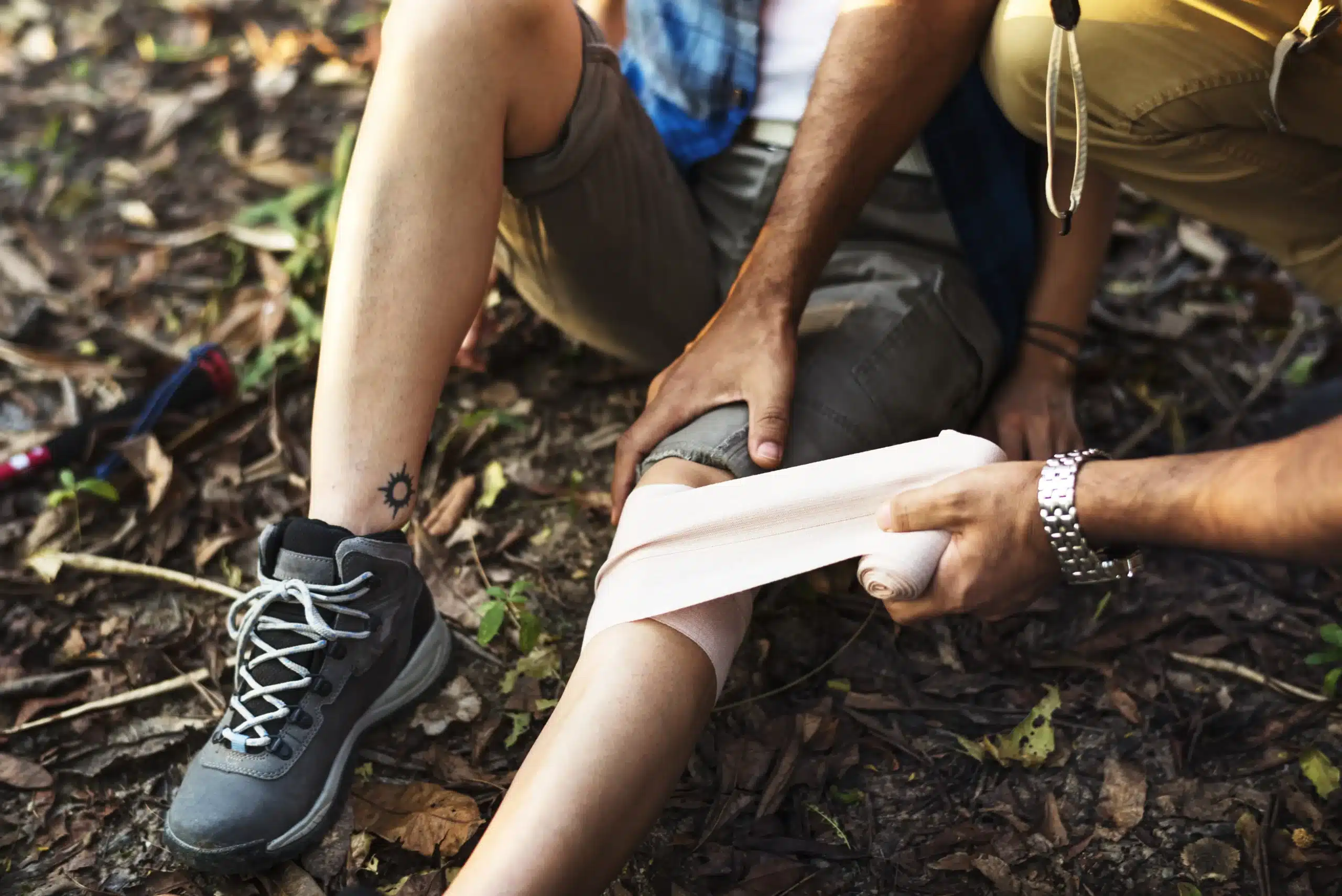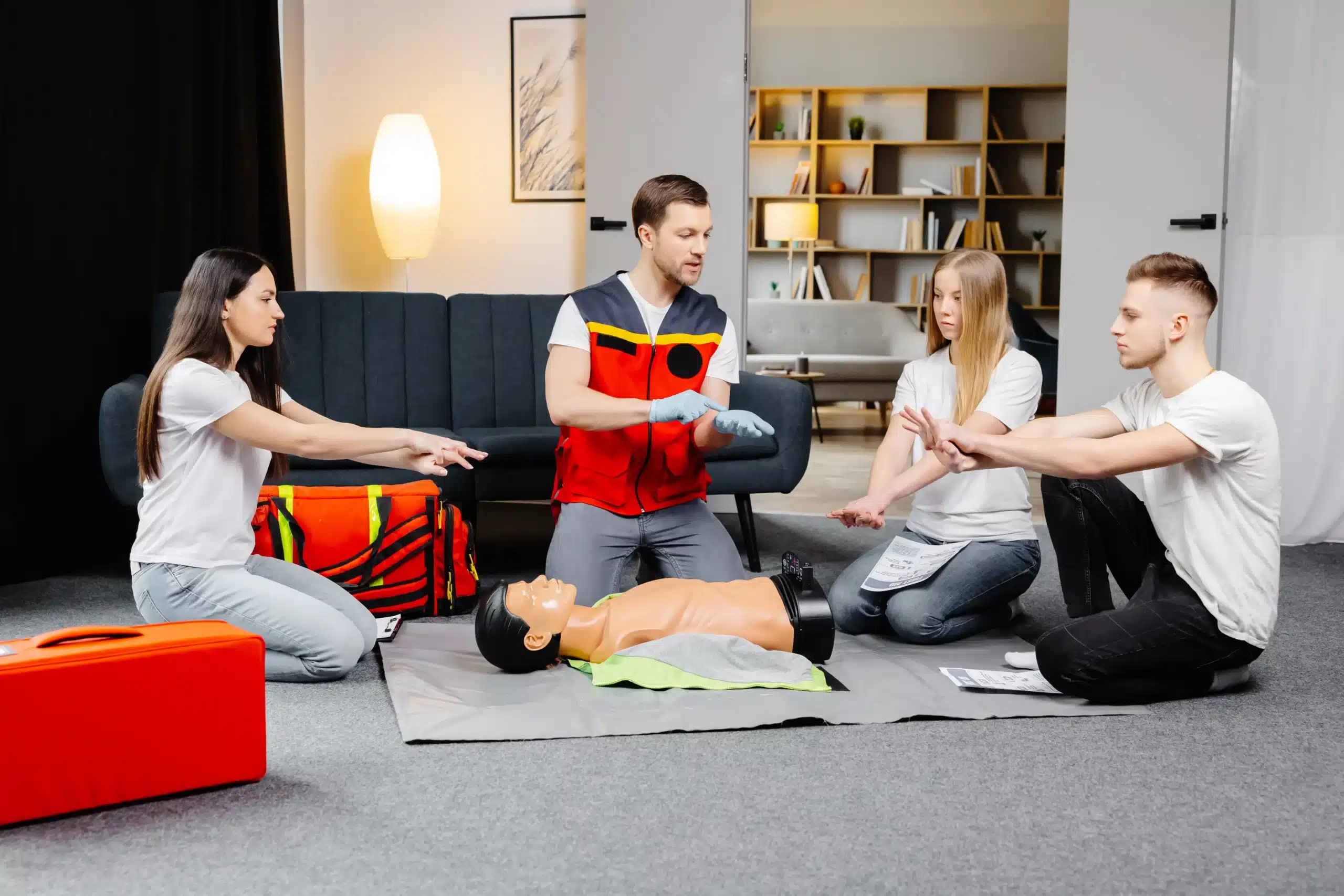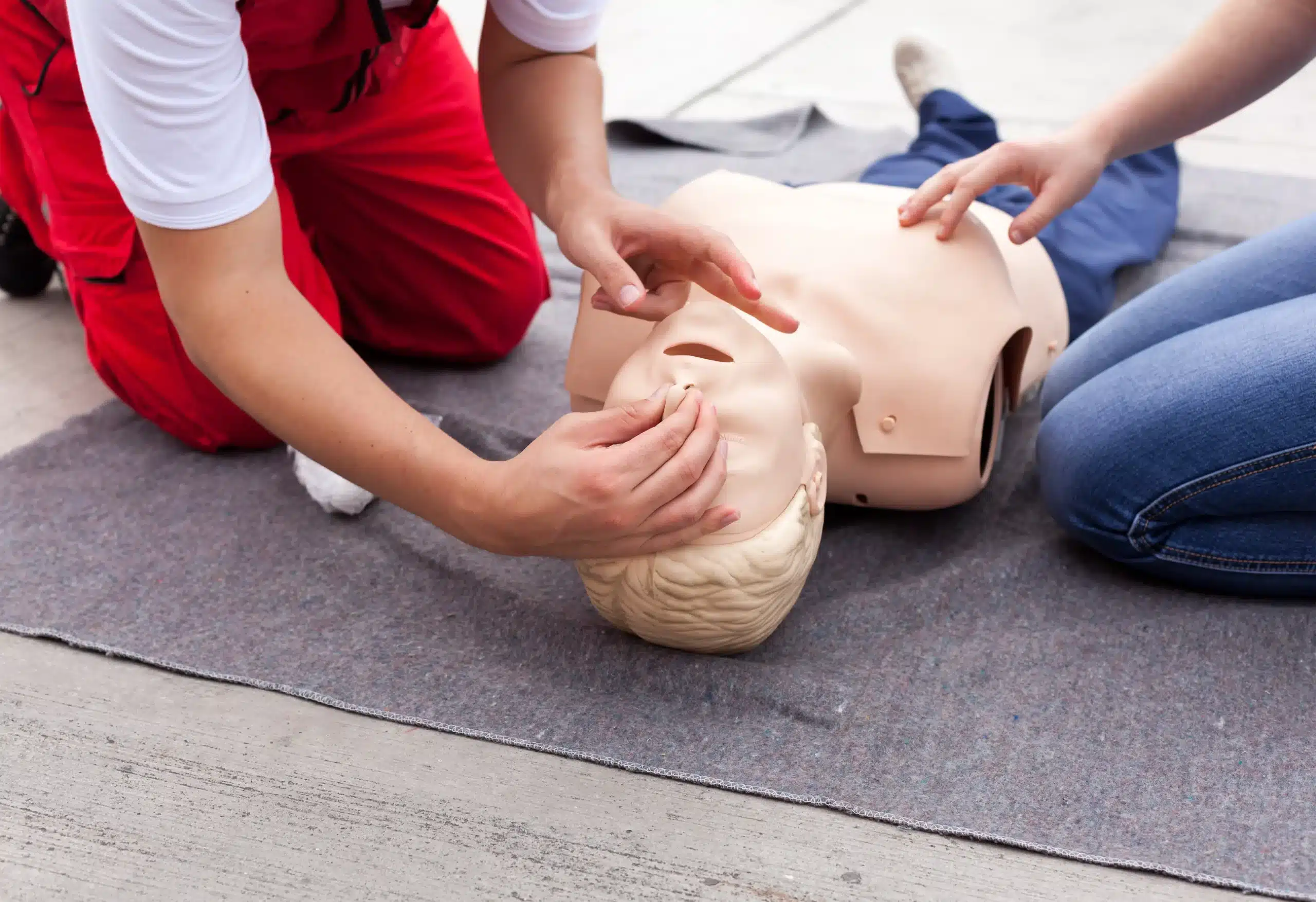Learning CPR can quite literally change the course of someone’s life—and it’s a skill more accessible than you might think. This comprehensive guide breaks down everything you need to know about CPR training, from the different types of courses and what to expect in a class to finding CPR courses near me and understanding the associated costs. Whether you’re a healthcare professional seeking recertification or a concerned citizen wanting to learn a life-saving skill, this guide will help you find the right CPR training in Napa, American Canyon, or Vallejo. We’ll explore reputable CPR trainers like the American Heart Association and the American Red Cross, discuss the benefits of CPR certification, and even offer tips on preparing for your class. Let’s empower you to make a difference.
Key Takeaways
- CPR training empowers you to save lives: Find a course—from basic to advanced—that fits your needs and learn to respond effectively in emergencies. Explore options at Safety Training Seminars in Napa, CA.
- Choosing the right CPR course involves assessing your goals and comparing options: Consider course content, format, schedule, location, and cost to find the perfect fit.
- Prepare for your CPR class with a few simple steps: Dress comfortably, bring a notebook and water, and review basic CPR concepts beforehand.
What is CPR? Your Guide to CPR Training
Cardiopulmonary resuscitation (CPR) is a life-saving technique used when someone’s heart stops beating. It combines chest compressions and rescue breaths to circulate oxygenated blood to the brain and other vital organs. Learning CPR empowers you to respond effectively during emergencies and potentially save a life. CPR training equips you with the knowledge and skills to act confidently when faced with a cardiac arrest situation. If you’re in Napa, American Canyon, or Vallejo, Safety Training Seminars offers comprehensive CPR courses.
CPR training is accessible to everyone, regardless of background or experience. These courses break down the steps of CPR into easy-to-understand instructions, ensuring that anyone can learn and apply this essential skill. The benefits extend beyond simply knowing how to perform CPR; it instills a sense of preparedness and confidence in emergency situations. Knowing you can make a difference can be incredibly empowering. Learn more about CPR training and certification.
CPR certification provides you with the skills to respond effectively in real-world emergencies. Whether it’s a family member, friend, coworker, or even a stranger, having CPR training allows you to provide immediate assistance while waiting for professional medical help to arrive. This immediate action can significantly improve the chances of survival. CPR training also prepares you mentally for the stress and pressure of emergency situations, allowing you to remain calm and focused when every second counts. Explore the benefits of CPR training.
CPR Course Types
Knowing which CPR course best suits your needs can feel overwhelming with so many options. This section breaks down the most common types to help you choose the right one for you.
Basic CPR
Basic CPR courses equip you with fundamental life-saving skills to respond effectively to cardiac emergencies. These courses cover core techniques like chest compressions, rescue breaths, and how to recognize the signs of a heart attack. Basic CPR certification is often a job requirement in fields like education and childcare. It’s also a valuable skill for anyone who wants to be prepared to help in a crisis.
CPR with First Aid
Combining CPR and first aid training gives you a broader skill set for handling various medical emergencies. You’ll learn CPR techniques and how to treat minor injuries like cuts and burns, manage allergic reactions, and handle other common first aid scenarios. This comprehensive approach empowers you to respond confidently to a wider range of situations.
Healthcare Provider CPR
Healthcare Provider CPR, often referred to as BLS (Basic Life Support), is designed for medical professionals, including doctors, nurses, paramedics, and other healthcare providers. This advanced training covers more complex procedures, such as using an AED (Automated External Defibrillator), two-rescuer CPR, and airway management techniques. BLS certification is typically mandatory for those working or seeking careers in the medical field. It ensures they have the specialized skills to respond to cardiac emergencies in clinical settings.
Find CPR Courses Near You
Knowing where to find CPR training can be tricky. This section breaks down your options, from online resources to local facilities.
Online Course Locators
Online CPR certification can be a convenient option if you need flexibility. Just make sure the course is issued by a reputable organization accredited by the American Heart Association (AHA) or the American Red Cross (ARC). This ensures your certification will be widely accepted. Online courses typically range from $20 to $60, offering choices for different budgets. For example, CPRCertified.com offers a variety of online CPR courses at different price points. Always double-check the accreditation before enrolling.
Local Community Resources
Your local community often offers valuable resources for CPR training. Check with community centers, schools, or local organizations. Many collaborate to host CPR workshops and training sessions, making training more accessible. These initiatives not only provide training but also help build a network of people in your community ready to respond to emergencies. Promoting CPR training strengthens everyone’s ability to handle crises effectively. Consider reaching out to your local fire department or recreation centers for information on upcoming classes. MyCPR NOW offers great advice on building a community of lifesavers.
Medical Facilities
Hospitals, clinics, and dedicated training centers often provide CPR certification courses. Safety Training Seminars, for example, offers a range of AHA-certified courses, including BLS, ACLS, PALS, and CPR, right here in Napa, CA. This allows you to choose the specific training that meets your needs. Check with facilities in your area, like Napa CPR Classes, to find a course that fits your schedule and requirements.
What to Expect in a CPR Class
CPR classes blend theory and practical skills to equip you with the confidence to act in emergencies. Here’s a glimpse of what awaits:
Classroom Instruction
Your CPR journey begins with expert-led discussions covering essential concepts. You’ll learn to recognize the signs of a cardiac arrest, understand how CPR works, and the importance of calling 911. These sessions often debunk common CPR misconceptions, highlighting how accessible and empowering this training is. CPR training empowers people to provide immediate care while waiting for professional medical help. For more information on common CPR misconceptions, check out this helpful article from MyCPR NOW, Debunking Common Misconceptions About CPR.
Hands-on Practice
Theory comes to life in the hands-on portion of the class. You’ll practice on CPR training mannequins, learning the precise hand placement and depth of compressions needed for effective CPR. This practical training builds muscle memory and confidence, preparing you to act quickly and efficiently in a real-life scenario. The article Myths About Learning CPR from Emergency First Response offers further insights into the importance of hands-on training.
Assessment and Certification
Most CPR courses conclude with an assessment to evaluate your understanding and practical skills. This typically involves demonstrating your CPR technique on a mannequin. Upon successful completion of a course like the BLS course through Safety Training Seminars, you’ll receive an official American Heart Association (AHA) certification card. This certification validates your training and allows you to confidently provide CPR assistance.
CPR Training Costs & Value
Getting CPR certified is an investment in yourself and your community. Understanding associated training costs helps you make informed decisions and find the best value. Let’s break down typical costs, factors that influence pricing, and potential ways to save.
Average Course Costs
CPR certification costs typically cover training materials, instructor fees, and the certification exam. Basic CPR classes can range from $50 to $150. More advanced certifications, such as ACLS or PALS, or courses that include first aid training, may cost $200 or more. Online CPR courses can be more budget-friendly, ranging from $20 to $60, including the certification test and a wallet card. Remember, the price difference often reflects the depth of the training and the resources provided. For example, you can compare online options at CPRCertified.com to get a sense of online pricing.
Factors Affecting Costs
Several factors influence the final cost of your CPR certification. Location plays a role, as prices can vary between cities and training centers. The class format—in-person, online, or blended—also affects the cost. In-person classes often involve higher overhead for the instructor and facility, while online courses offer more flexibility and potentially lower prices. Additional features, such as specialized training materials or smaller class sizes, can also influence the overall cost. Our CPR training in Napa offers various course options with varying price points depending on the included training components.
Discounts and Promotions
Look for potential discounts or promotions to make your CPR training more affordable. Many providers offer discounts for group registrations, a great option for workplaces or community groups. Some organizations offer discounts for combined courses (like CPR and first aid) or for registering over the phone. Check with providers like the American CPR Care Association for current deals. Keep an eye out for seasonal promotions or special offers, which can help you save on your certification. It’s always a good idea to contact the training provider directly to inquire about any available discounts.
CPR Certification: Duration & Details
Typical Course Length
CPR course length depends on the certification level. A basic CPR/AED course for the general public typically lasts 2.5 to 3 hours, covering the essentials and fitting most schedules. More advanced training, like BLS, ACLS, or PALS for healthcare providers, usually takes 4 to 6 hours. Specialized courses, including the EMSA Child Care Health & Safety program, may have different durations, so check with your chosen provider.
Certification Validity
Your CPR certification is generally valid for two years. This standard, set by organizations like the American Heart Association and the American Red Cross, ensures rescuers maintain current knowledge and skills, critical for effective emergency response. Check your certification card for the specific expiration date.
Renewal Process
Renew your CPR certification every two years with a refresher course covering the latest guidelines and techniques. This keeps your skills sharp and your certification current. Don’t let it lapse—sign up for a renewal course before expiration to maintain your skills and confidence.
Reputable CPR Trainers
Finding the right CPR trainer is crucial for receiving high-quality instruction and a recognized certification. Several respected organizations offer comprehensive CPR training programs. Here are a few key providers to consider:
American Heart Association (AHA)
The American Heart Association is a leading authority in CPR training and research. Their certification programs are widely accepted and known for their rigorous standards. AHA courses equip individuals with the knowledge and skills to respond effectively in cardiac emergencies. They offer various levels of CPR training, from basic life support (BLS) for healthcare providers to courses designed for community members. AHA certification ensures your training aligns with the latest scientific guidelines.
American Red Cross
The American Red Cross is another well-respected organization offering a range of CPR classes and certification options. Their courses are designed to be accessible and convenient, with options for various schedules and learning styles. The Red Cross provides training for individuals, workplaces, and community groups, making it easy to find a course that fits your needs. Like the AHA, Red Cross certification is nationally recognized and demonstrates your commitment to providing quality care in emergencies.
Safety Training Seminars
Safety Training Seminars offers American Heart Association BLS, ACLS, PALS, and CPR classes right here in Napa, CA. They focus on providing excellent customer service and affordable pricing, making them a great option for locals. Their range of courses caters to different needs, from basic CPR and first aid to advanced certifications for healthcare professionals. Safety Training Seminars is committed to equipping the Napa community with life-saving skills. Check out their BLS, ACLS, and PALS courses for healthcare providers. They also offer EMSA Child Care Health & Safety training and RQI classes.
National Safety Council
The National Safety Council is a trusted resource for safety training and information. They emphasize the importance of CPR training for enhancing community safety and individual preparedness. While they may not directly offer courses in all locations, they provide valuable resources and information about CPR training and its benefits. The National Safety Council advocates for widespread CPR training and its potential to save lives.
Local Healthcare Institutions
Many local hospitals and healthcare institutions offer CPR training courses to their staff and the surrounding community. Check with hospitals and clinics in your area to see if they provide CPR certification. These courses are often taught by experienced medical professionals and can be a convenient option for those seeking local training. They may also offer specialized courses tailored to specific healthcare needs.
Benefits of CPR Training
Learning CPR offers significant advantages, from potentially saving a life to boosting your career prospects. Let’s explore some key benefits:
Learn Life-Saving Skills
CPR certification equips you with the skills to respond effectively during medical emergencies like cardiac arrest. These skills empower you to provide immediate assistance, potentially bridging the gap until professional medical help arrives, and can significantly improve the chances of survival. Learning CPR is an investment in the well-being of your community. It provides you with the knowledge and confidence to act when seconds count.
Advance Your Career
A CPR certification can be a valuable asset in your professional life. Many employers view CPR training favorably, and some industries, such as healthcare, education, and childcare, may require it. CPR certification demonstrates your preparedness and commitment to safety, potentially opening doors to new opportunities or giving you an edge in your current role.
Build Confidence in Emergencies
Beyond the practical skills, CPR training instills confidence and reduces anxiety in emergency situations. Knowing how to respond effectively can help you stay calm and focused under pressure, allowing you to provide critical assistance when it matters most. This preparedness can foster a greater sense of self-assurance in various challenging situations. You’ll be prepared to take action and potentially make a real difference.
Choose the Right CPR Course
So, you’ve decided to get CPR certified—great! Now, how do you choose the right course? With several options available, it’s important to find one that aligns with your specific needs, schedule, and budget. Here’s a breakdown to help you find the perfect fit:
Assess Your Needs
First, think about why you’re pursuing CPR certification. Are you required to have it for your job in healthcare or childcare? Are you a parent wanting to be prepared for emergencies at home? Or are you simply interested in gaining a valuable life skill? Understanding your motivation will guide you toward the right type of course. For example, healthcare providers often need specific certifications, like BLS, ACLS, or PALS, while community members might find a basic CPR and first-aid course sufficient. If you work at a childcare facility, you might need specialized training like the EMSA Child Care Health & Safety course. Knowing your “why” is the first step.
Compare Courses
Once you have a general idea of the type of certification you need, compare courses. Look at what each course covers. Some focus solely on CPR techniques, while others include first aid or AED training. Safety Training Seminars offers a range of American Heart Association (AHA) certified courses, so you can find one tailored to your requirements. Also, consider the course format. Do you prefer in-person instruction, the flexibility of online learning, or a blended approach? Each format has its own advantages, so choose the one that best suits your learning style and schedule. Finally, compare costs. CPR course pricing can vary based on the provider, location, and course content.
Consider Schedule & Location
Finding a course that fits your schedule is essential. Look for classes offered on weekends, evenings, or weekdays. Safety Training Seminars offers courses seven days a week, making it easier to find a convenient time. Location is another important factor. Choose a training center that’s easy to get to. See if courses are available in your city or if you’ll need to travel. You can also explore community resources like local organizations, schools, or community centers, which sometimes offer CPR workshops. Considering these factors helps you find a CPR course that seamlessly fits into your life.
Prepare for Your CPR Class
Getting ready for your CPR class isn’t complicated, but a little preparation can make your learning experience smoother. Knowing what to expect and how to prepare can help you focus on gaining these important life-saving skills. At Safety Training Seminars, we want you to feel confident and ready, so here’s a quick guide:
What to Bring
CPR classes are hands-on. You’ll use a CPR training mannequin to practice chest compressions and get a feel for the correct depth and pressure. We provide all the necessary equipment in our Napa CPR classes, but you might want to bring a notebook and pen for taking notes, especially if that helps you learn. A small water bottle is also a good idea, especially for longer sessions.
Pre-Course Study
While no extensive pre-course study is required for our CPR classes, reviewing basic CPR concepts can be helpful. Understanding the importance of CPR and its role in the chain of survival can give you a head start. This knowledge empowers you to provide immediate care in an emergency until professional help arrives. Resources like the American Heart Association website offer valuable information on CPR basics.
Dress Code & Physical Requirements
CPR training involves physical activity, including kneeling and performing chest compressions. We recommend wearing comfortable clothing that allows for a full range of motion. Avoid restrictive clothing or anything that might make it difficult to participate in the hands-on portions of the class. If you have any physical limitations or concerns, please contact us before your class. We’re happy to discuss any necessary accommodations. CPR training offers many benefits beyond learning the skills—it builds confidence and empowers you to act in critical situations.
Related Articles
- Your Guide to CPR Training in American Canyon – Napa CPR Classes
- Why CPR Is Important in Healthcare – how it saves lives
- CPR Certification in Napa: Your Comprehensive Guide – Napa CPR Classes
- CPR & First-Aid in Vallejo: Your Comprehensive Guide – Napa CPR Classes
- Course Preparation – Napa CPR Classes
Frequently Asked Questions
How long does it take to get CPR certified? CPR certification courses vary in length, but a basic CPR/AED course typically takes between 2.5 and 3 hours to complete. More advanced certifications, such as BLS, ACLS, or PALS for healthcare providers, usually require 4 to 6 hours. Specialized courses, like the EMSA Child Care Health & Safety program, may have different durations, so it’s always best to check with your chosen training provider.
What’s the difference between CPR and first aid? CPR focuses specifically on life-saving techniques for cardiac arrest, involving chest compressions and rescue breaths. First aid covers a broader range of medical emergencies, from minor injuries like cuts and burns to managing allergic reactions and other non-life-threatening situations. Some courses combine CPR and first aid training, offering a more comprehensive skillset.
How much does CPR training cost? The cost of CPR training varies depending on several factors, including the type of course, location, and training provider. Basic CPR classes can range from $50 to $150, while more advanced certifications like ACLS or PALS might cost $200 or more. Online CPR courses tend to be more budget-friendly, typically ranging from $20 to $60. Look for potential discounts, such as group registrations or combined course offers, to make your training more affordable.
How often do I need to renew my CPR certification? CPR certifications are typically valid for two years. Renewal is essential to stay up-to-date with the latest guidelines and maintain your skills. Sign up for a renewal course before your certification expires to ensure you’re always prepared to respond effectively in an emergency.
What if I have physical limitations? Can I still learn CPR? Absolutely! While CPR involves physical activity, modifications can be made to accommodate various physical limitations. If you have any concerns, it’s always best to contact the training provider before your class. They can discuss any necessary accommodations to ensure you can fully participate and gain the skills and confidence needed to perform CPR effectively.
